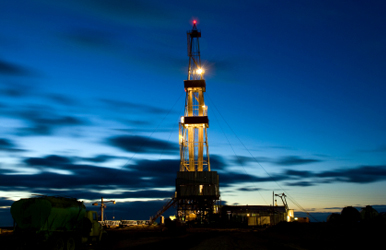Oil ‘tipping point’ has passed with much higher prices to come
 As Alaskans grapple with the issue of oil taxes and what state legislative moves, if any, will increase the flow of North Slope crude through the trans-Alaska pipeline, a new commentary in the scientific journal Nature warns that the world’s oil market has permanently changed “phase” into an era of dwindling reserves accompanied by higher and evermore volatile price swings.
As Alaskans grapple with the issue of oil taxes and what state legislative moves, if any, will increase the flow of North Slope crude through the trans-Alaska pipeline, a new commentary in the scientific journal Nature warns that the world’s oil market has permanently changed “phase” into an era of dwindling reserves accompanied by higher and evermore volatile price swings.
The essay, Climate Policy: Oil’s tipping point has passed, primarily calls for action to transform fuel efficiency and jump-start alternative energy use.
The world’s future economic health depends upon it, the authors argue.
But for Alaska — a place powered by oil revenue — the predictions might suggest another conclusion that has bearing on the current debate over tweaking oil taxes. The price of oil — including the crude extracted from state land on the North Slope that contributes the bulk of Alaska’s income — can only continue to rise.
“There is less fossil-fuel production available to us than many people believe,” write James Murray of the School of Oceanography at the University of Washington and David King of the Smith School of Enterprise and the Environment at the University of Oxford.
From 2005 onwards, conventional crude-oil production has not risen to match increasing demand. We argue that the oil market has tipped into a new state, similar to a phase transition in physics: production is now ‘inelastic’, unable to respond to rising demand, and this is leading to wild price swings. Other fossil-fuel resources don’t seem capable of making up the difference.
A new era
A century of increasing oil production reached 72 million barrels per day in 2005 and has essentially stalled since then, hitting a ceiling of 75 million barrels per day. Murray and King say this situation marks a “tipping point” — a “step change” — that might make the specter of commerce-strangling, $100-per-barrel oil a permanent fixture of the world economic scene.
In other words, the era of “peak cheap oil” just may have arrived.
“We are not running out of oil, but we are running out of oil that can be produced easily and cheaply,” they explain.
The US Energy Information Administration optimistically projects a 30 percent increase in oil production between now and 2030. All of that increase is in the form of unidentified projects — in other words, oil yet to be discovered. Even if production at existing fields miraculously stopped declining, such an increase would require 22 million barrels per day of new oil production by 2030. If realistic declines of 5% per year continue, we would need new fields yielding more than 64 million barrels per day — roughly equivalent to today’s total production. In our view, this is very unlikely to happen.
A big factor in the 2008 global economic crash was the oil price spike, and the danger to the world economy poised by future price spikes will only mount, they say.
Of the 11 recessions in the United States since the Second World War, 10, including the most recent, were preceded by a spike in oil prices. It seems clear that it wasn’t just the ‘credit crunch’ that triggered the 2008 recession, but the rarely-talked-about ‘oil-price crunch’ as well. High energy prices erode family budgets and act as a head wind against economic recovery.
Rethinking fossil fuels
Murray and King deliver gobs of statistics and several striking charts in support of their thesis. They argue that new sources of fuels — coal, natural gas and non-conventional sources like shale-oil gas — will not make up the difference.
As a result, the world’s governments must act fast to reduce reliance on fossil fuels, the authors argue. “The solutions are not secret or mysterious.”
Alaskans take note: “Drill baby drill” isn’t one of their suggestions.
First on their to-do list would be to mount a global mission against the inefficiencies in combustion engines, power plants and distribution networks. The authors argue that the global economy burns 475 × 1018 joules of primary energy to reap 55 × 1018 joules of useful energy — a grotesque bang-for-buck situation where 88 percent of fossil fuel energy gets consumed by the process of creating it.
We need to specify conservation goals for improving the efficiency of use of fossil-fuel energy. These include taxing oil to keep prices high and to encourage a reduction in energy use; encouraging nuclear energy; questioning if and how economic growth can continue without an increase in fossil fuels; lowering speed limits on roads and encouraging public transport; or redirecting tax credits towards renewable-energy development.
As the oil tax debate ignites in the Alaska Legislature over the coming weeks, denizens of America’s Arctic state might remember that “taxing oil to keep prices high and … encourage a reduction in energy use” is a key ingredient in Murray’s and King’s recipe for weaning the world off fossil fuel.
Contact Doug O’Harra at doug(at)alaskadispatch.com
For more stories from Alaska Dispatch, click here.



